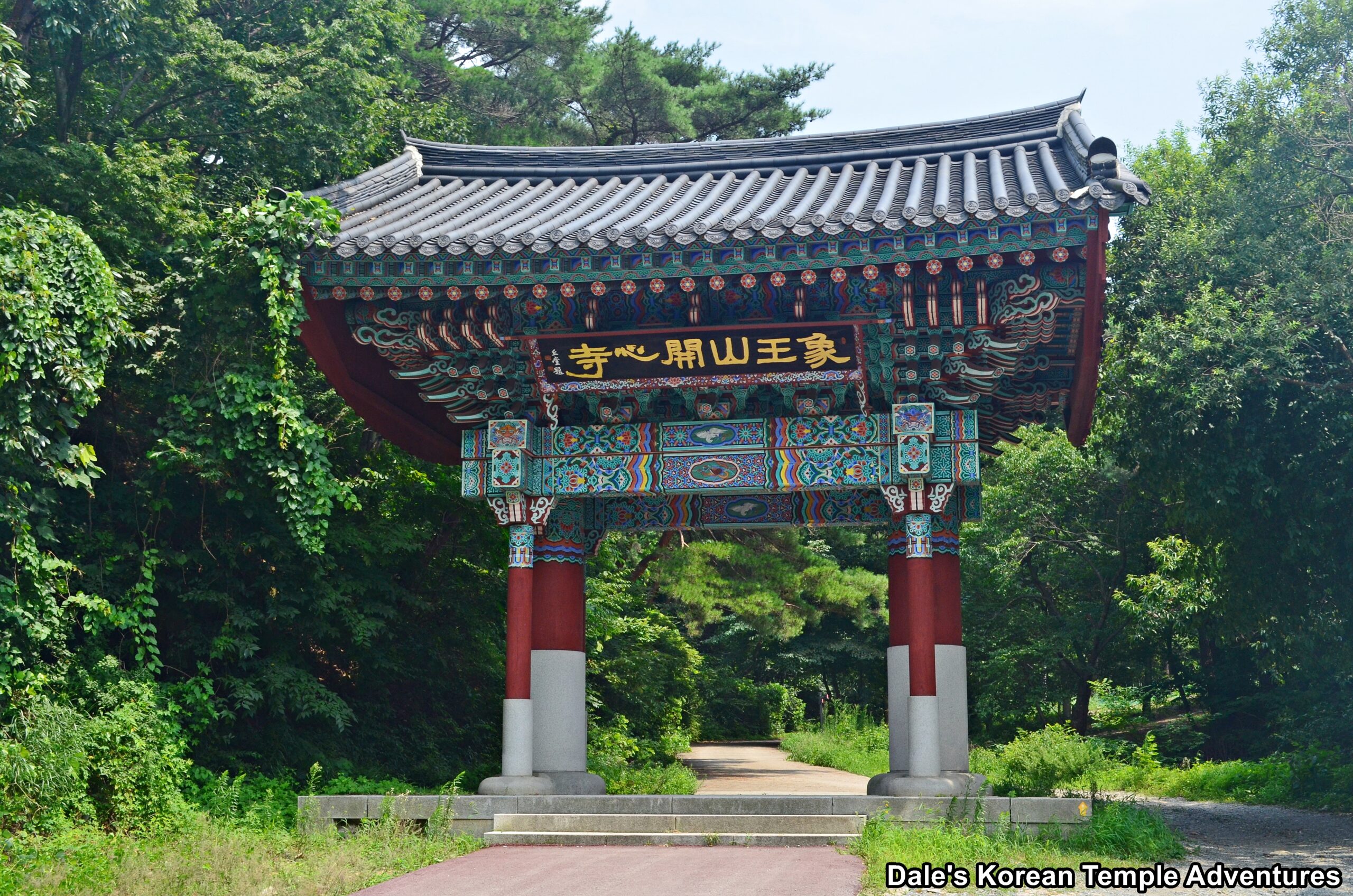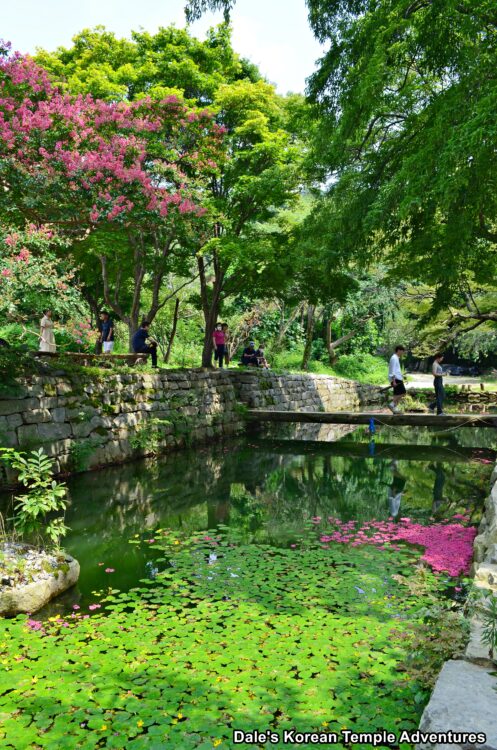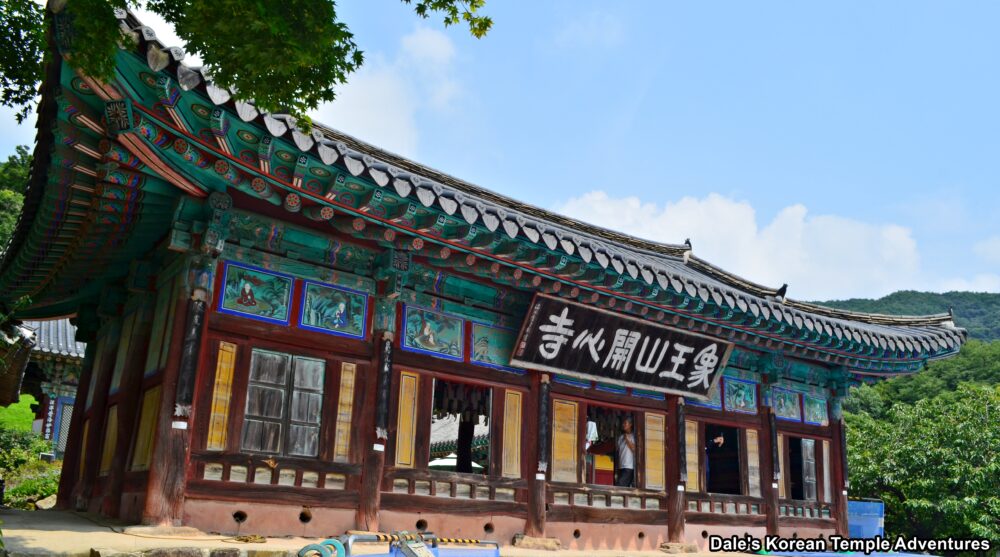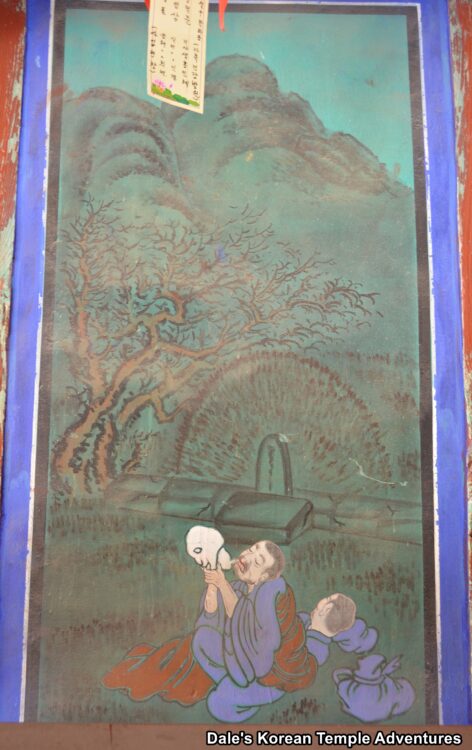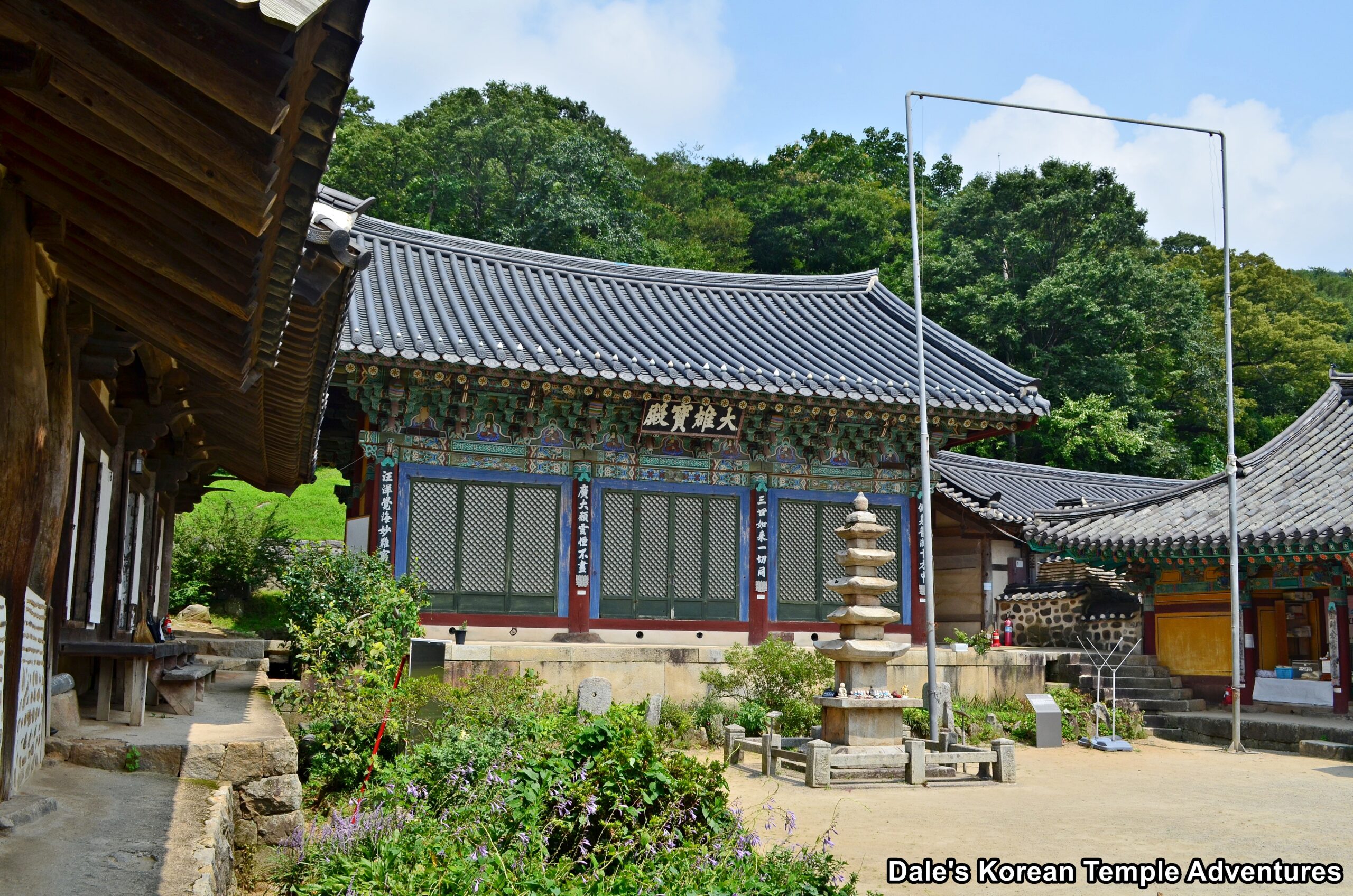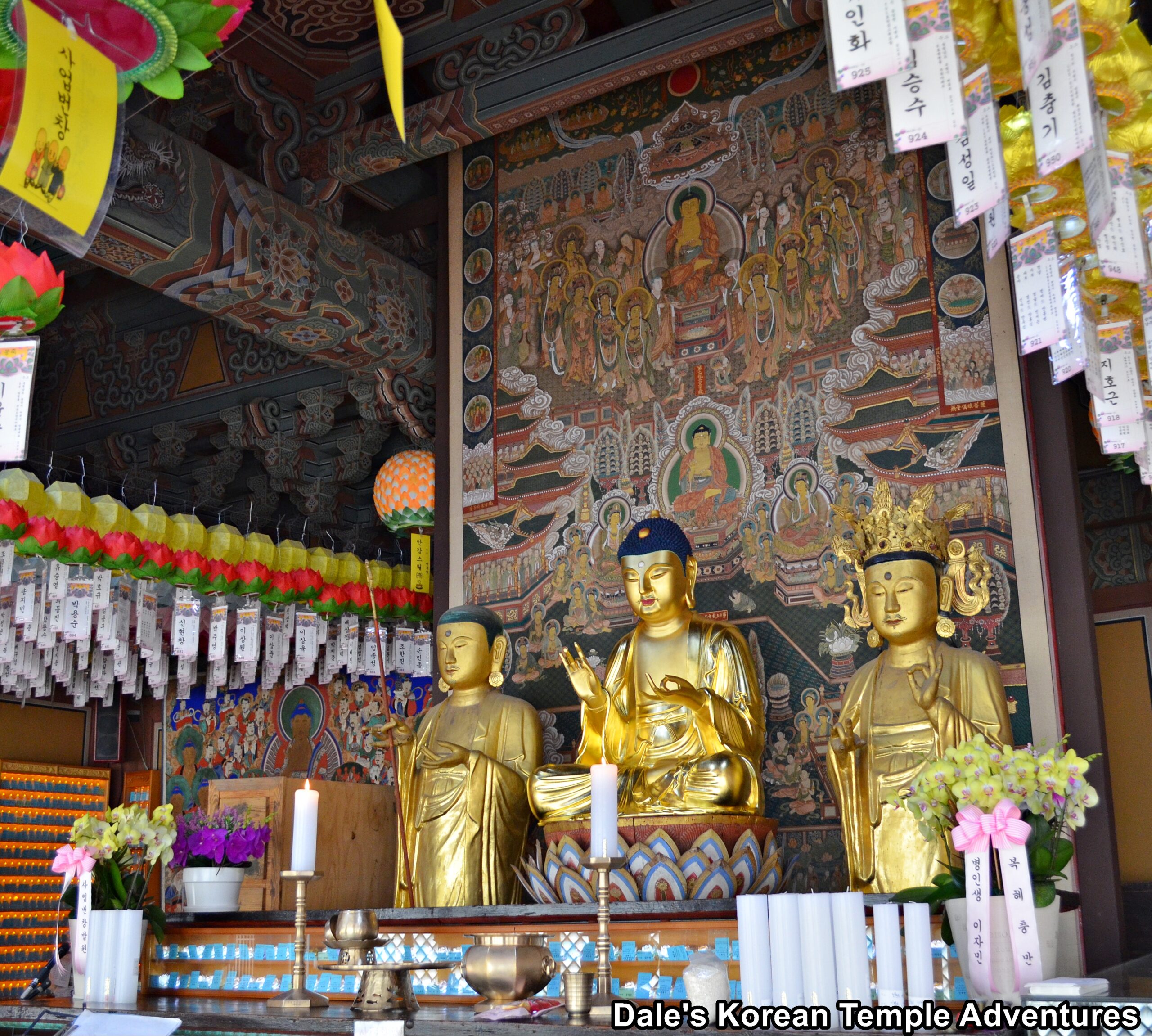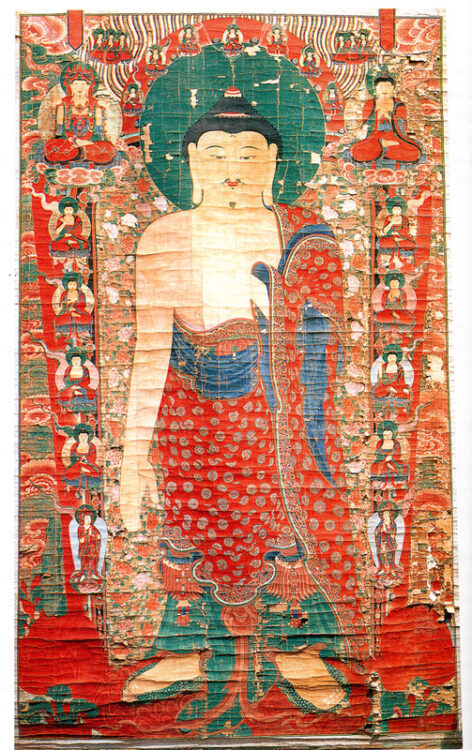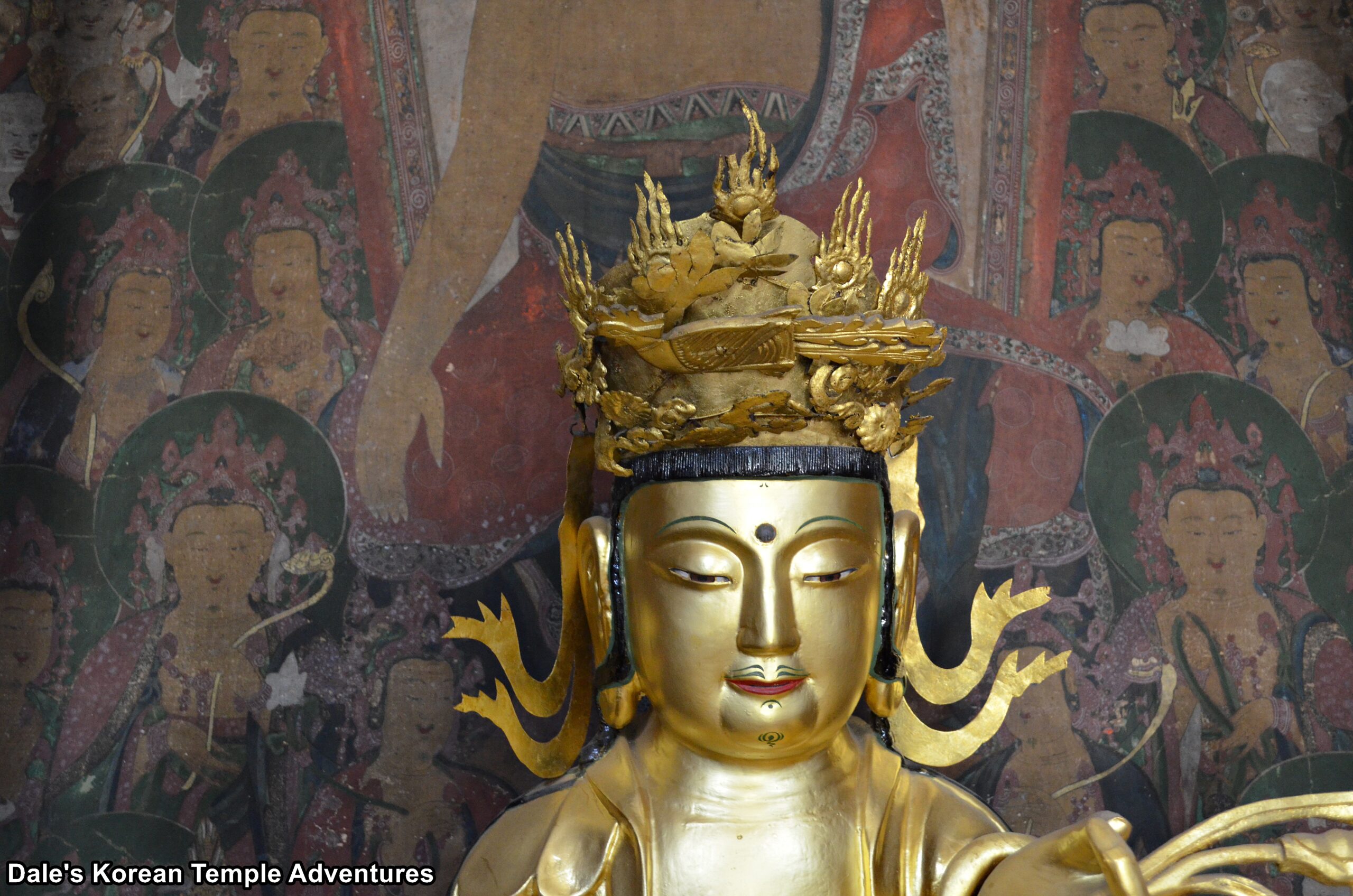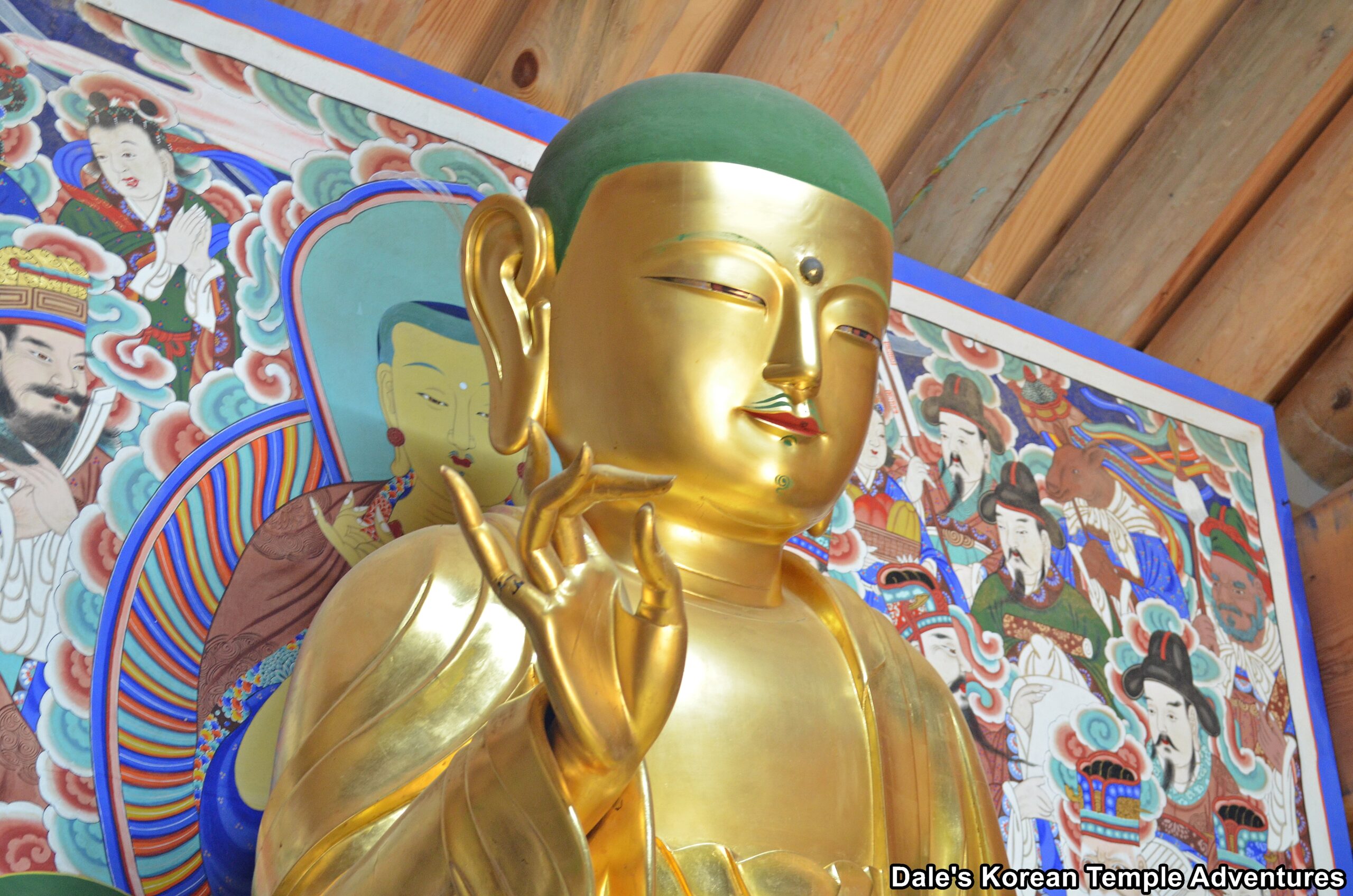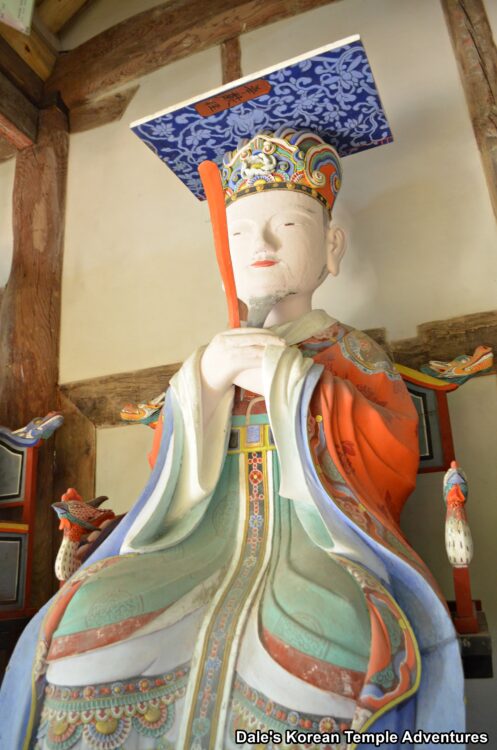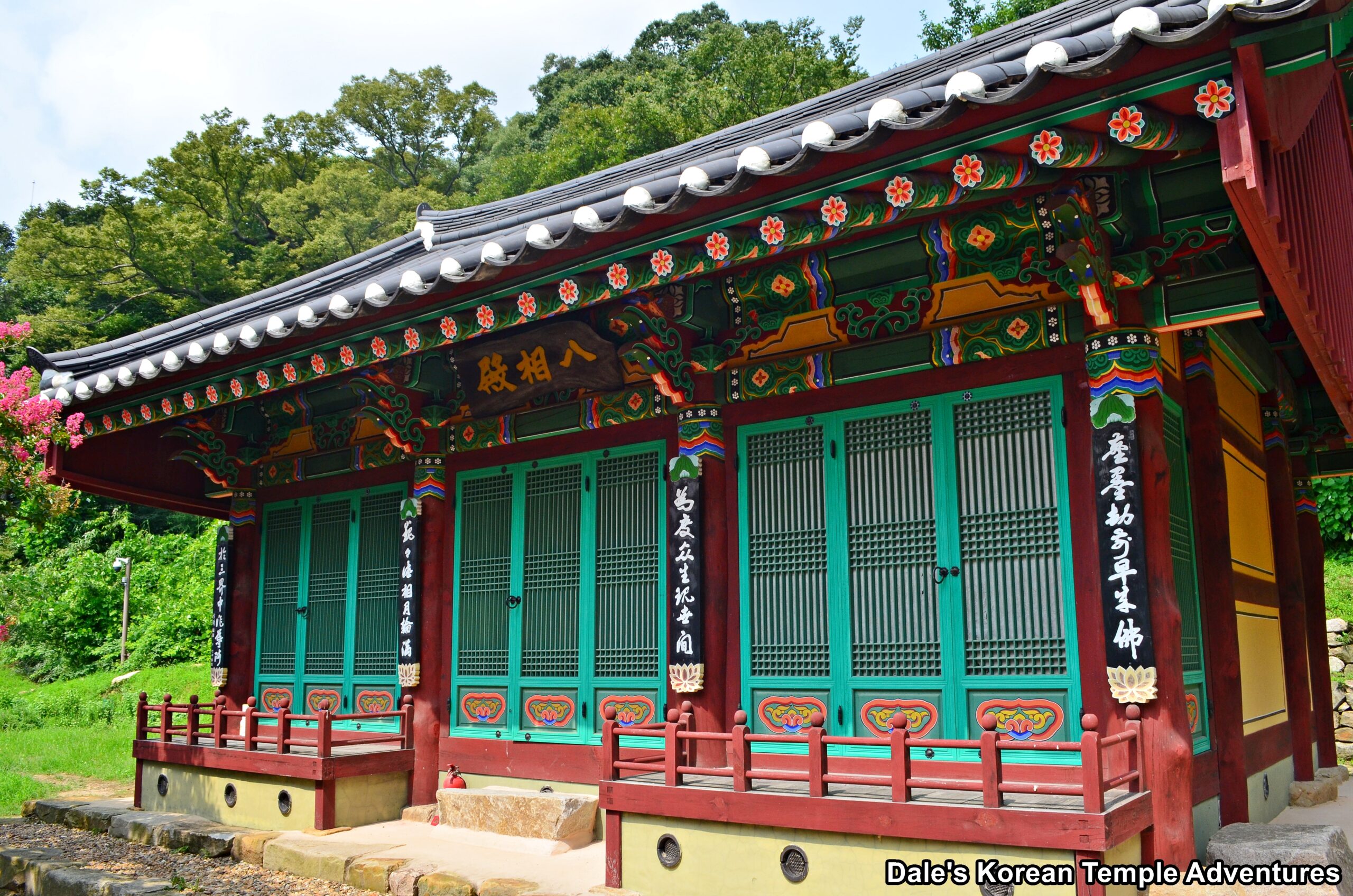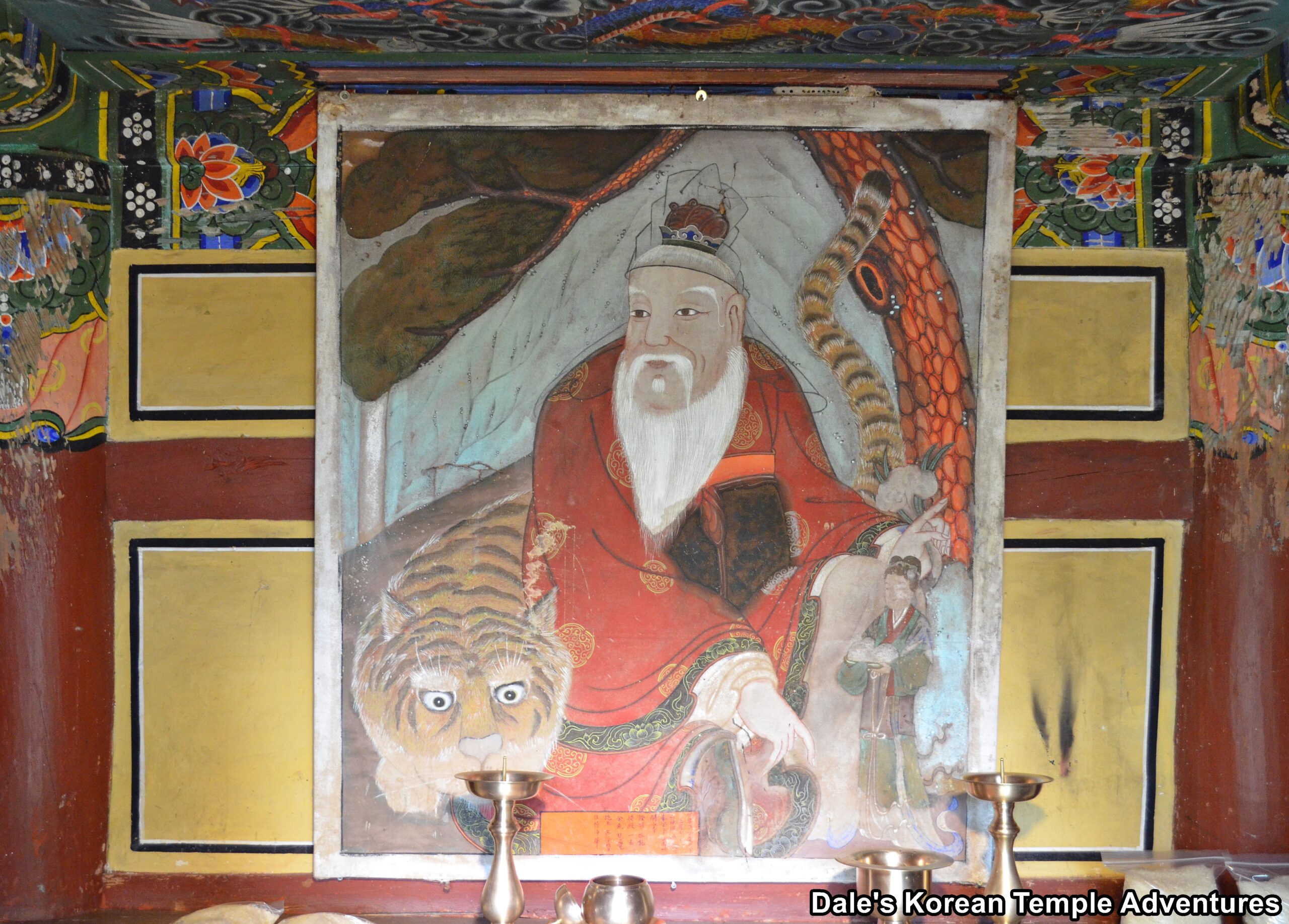Gaesimsa Temple – 개심사 (Seosan, Chungcheongnam-do)
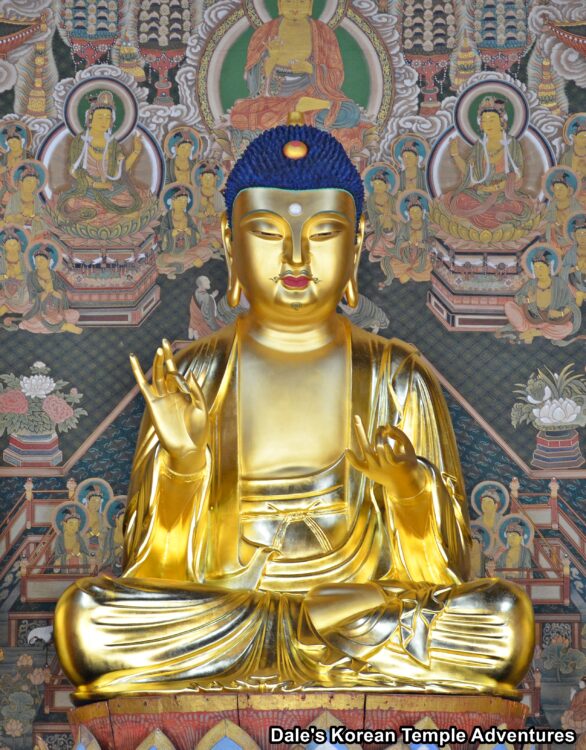
Temple History
Gaesimsa Temple is located in eastern Seosan, Chungcheongnam-do. Gaesimsa Temple is joined to the south by Mt. Illaksan (521.4 m). Rather confusedly, it’s written about the temple’s history that Gaesimsa Temple was built by the monk Hyegam in the 5th year of Queen Jindeok of Silla’s reign (r. 647-654 A.D.) and the 14th year of King Uija of Baekje’s reign (r. 641-660 A.D.). The only problem with this is that that would make it the year 651 A.D. during Queen Jindeok of Silla’s reign, while it would make it 654 A.D. during King Uija of Baekje’s reign. Generally, however, it’s believed that Gaesimsa Temple was first constructed in 654 A.D.
When the temple was first built, it was known as Gaewonsa Temple. However, when the temple was repaired by the monk Cheoneung in 1350, the temple had its name changed to its current name of Gaesimsa Temple. The temple was then reconstructed in 1475, which included the rebuilding of the Daeung-jeon Hall that was constructed in 1484, due to a fire that broke out on the temple grounds. Gaesimsa Temple would further be repaired in 1740 and 1955.
In total, Gaesimsa Temple is home to five Korean Treasures. They are the Daeung-jeon Hall, which is Korean Treasure #143; the Hanging Painting of Gaesimsa Temple (The Vulture Peak Assembly); the Wooden Seated Amitabha Buddha, which is Korean Treasure #1619; the Buddhist Paintings of Gaesimsa Temple, Seosan (Five Emperors of the Five Cardinal Directions and Four Underworld Messengers), and the Buddhist Paintings of Gaesimsa Temple, Seosan (Indra, Brahma, Eight Vajras, and Four Bodhisattvas). The latter of these two are off-limits to the general public and stored in a building at the temple.
Temple Layout
As you first approach Gaesimsa Temple, you’ll find a rectangular pond with a narrow stone bridge spanning its depths. Depending on when you visit the temple, you’ll see beautiful lotus flowers, pink flowers having fallen from the neighbouring trees, or a whole host of toads.
Having crossed over this pond, you’ll now be greeted by an empty space where the former Jong-gak (Bell Pavilion) once stood. The Jong-gak Pavilion was beautiful in its non-linear pillars that supported the weight of the structure. It was beautiful in its simplicity, as it housed a large Brahma Bell. However, it now appears as though the temple will move the Jong-gak Pavilion and build an entry gate, perhaps a Sacheonwangmun Gate, that is more in-line with the traditional layout of a Korean Buddhist temple.
Framing the empty lot where the Jong-gak Pavilion is located is the rather large Anyang-ru Pavilion, which was used for larger dharma talks. Now, however, it appears to be used for visitors to relax. The exterior walls are adorned with images of the Nahan (The Historical Disciples of the Buddha). And the interior is adorned with images of Wonhyo-daesa, Uisang-daesa, and various Buddhas and Bodhisattvas.
Straight in front of the Anyang-ru Pavilion, and past the slender five-story pagoda in the temple courtyard, is the Daeung-jeon Hall. This Daeung-jeon Hall dates back to 1484; and as was previously mentioned, is Korean Treasure #143. The exterior walls to the main hall are largely unadorned all but for the traditional dancheong colours. Stepping inside the Daeung-jeon Hall, you’ll find a beautiful triad resting on the main altar. It’s centred by the Wooden Seated Amitabha Buddha of Gaesimsa Temple, which was recently refurbished and returned to the temple in 2022. The Amita-bul (The Buddha of the Western Paradise) statue, at least according to a scroll found inside the statue during its repair in 2004, was first repaired back in 1280. The repair was overseen by a government institution in charge of Buddhist affairs known as a “Seungjaesaek” in Korean. The official in charge of this repair had the surname of Song. With all this in mind, the statue of Amita-bul was created no later than 1280, which was the year it was repaired probably as a result of the Mongol Invasions of Korea from 1231 to 1270. As for the statue itself, it’s a beautiful example of Late Goryeo (918-1392) Buddhist artistry with its clean lines and dignified appearance. Overall, the statue is beautifully proportioned with refined sophistication. And while the overall expression of the statue appears solemn, the facial expression is quite exotic. The short bell-shaped lines of Amita-bul’s robe are reminiscent of the Dry-Lacquered Seated Amitabha Buddha of Simhyangsa Temple in Naju, Jeollanam-do. Arguably, this Amita-bul statue at Gaesimsa Temple is the finest example of this form of artwork from the Late Goryeo Dynasty.
Book-ending this central image of Amita-bul are images of Gwanseeum-bosal (The Bodhisattva of Compassion) and Jijang-bosal (The Bodhisattva of the Afterlife). While not as old or as masterful as the central image of Amita-bul, these two accompanying main altar statues have a spirit of their own. Rather interestingly, there’s no canopy hanging over top of the main altar. To the left of the main altar is a painting dedicated to Amita-bul, and to the right of the main altar is a Shinjung Taenghwa (Guardian Mural). And tucked away behind the main altar, between the space afforded by the backside of the main altar and the rear wall of the Daeung-jeon Hall, is the box that houses the Hanging Painting of Gaesimsa Temple (The Vulture Peak Assembly) and is typically displayed on special occasions like the Buddha’s Birthday.
To the left of the Daeung-jeon Hall is an older structure that acts as both the monks’ dorms and a storage area. It was discovered during repair work conducted at the temple in 1962 that the Simgeom-dang Hall was rebuilt in 1477, which makes it the oldest structure at Gaesimsa Temple. And much like the former Jong-gak Pavilion, the pillars to this temple structure are twisted and turning.
To the right of the Daeung-jeon Hall, on the other hand, is the temple’s administrative office. I was fortunate enough to be invited in for a cup of tea; and while there, I was told about a statue and painting housed inside this office. According to the administrative office worker, the statue of Gwanseeum-bosal, which is backed by a Yeongsan hoesang-do (The Sermon on Vulture Peak Mural), is about two hundred and fifty years old. According to this same worker, the statue and painting were commissioned by the king to commemorate the death of his illegitimate daughter, who couldn’t be recognized as a princess. And when her husband died, the daughter of the king killed herself. And as a result, the king had the two pieces of artwork commissioned to honour his beloved daughter two hundred and fifty years ago.
To the front right of the administrative office, and through a pathway, you’ll find three additional temple shrine halls. The first is the Myeongbu-jeon Hall, which has a large image of a green haired statue dedicated to Jijang-bosal on the main altar. This rather large image is then joined by equally large images of the Siwang (The Ten Kings of the Underworld), who have a ghost-like appearance in their facial expressions and composition.
To the right of the Myeongbu-jeon Hall is the Palsang-jeon Hall. There are eight beautiful Palsang-do (The Eight Scenes from the Buddha’s Life Murals) housed inside this temple shrine hall, including a solitary image of Seokgamoni-bul (The Historical Buddha) on the main altar.
And the final temple shrine hall that visitors can enjoy at Gaesimsa Temple is the Sanshin-gak Hall, which is situated up near the tree-line to the right rear of the temple grounds. Housed inside this shaman shrine hall is a simplistic painting dedicated to Sanshin (The Mountain Spirit).
The one other structure at Gaesimsa Temple, which is off-limits to visitors, is a storage hall that is believed to house the remaining Korean Treasures at Gaesimsa Temple; namely, the Buddhist Paintings of Gaesimsa Temple, Seosan (Five Emperors of the Five Cardinal Directions and Four Underworld Messengers) and the Buddhist Paintings of Gaesimsa Temple, Seosan (Indra, Brahma, Eight Vajras, and Four Bodhisattvas).
How To Get There
The easiest way to get to Gaesimsa Temple, especially if you’re travelling in a group, is by taxi. You can catch a taxi from the Seosan Intercity Bus Terminal to Gaesimsa Temple. The ride will take about 25 minutes and cost you 18,000 won (one way).
Overall Rating: 8/10
It’s not everyday that you get to explore a temple so compact in size that houses five Korean Treasures. And the Korean Treasures are some of the finest of their kind in each of their distinct categories like the 15th century Daeung-jeon Hall, the Amita-bul statue housed inside the Daeung-jeon Hall, as well as the Gwaebul (Large Buddhist Banner Painting) housed inside the main hall. In addition to these treasures is the historic Simgeom-dang Hall, the artwork inside the Myeongbu-jeon Hall, and the pieces of artwork housed inside the administrative office. And while the Gaesimsa Temple is missing its iconic Jong-gak Pavilion, the entire temple grounds are still beautifully located in this part of Chungcheongnam-do.
